Sevilla: Sightseeing
The other day we woke up a little bit tired, because our roommates were snoring the whole night and we were both woken up by the noise. But no matter what, we had to be quick so that we can attend a free walking tour in the historical centre of Sevilla advised by the hostel staff. But before that, we had to take a shower and have our breakfast. The Argentinian girl we met the night before told us in the kitchen that she would come to the walking tour as well, so we decided to find the meeting point, the Plaza Nueva together.
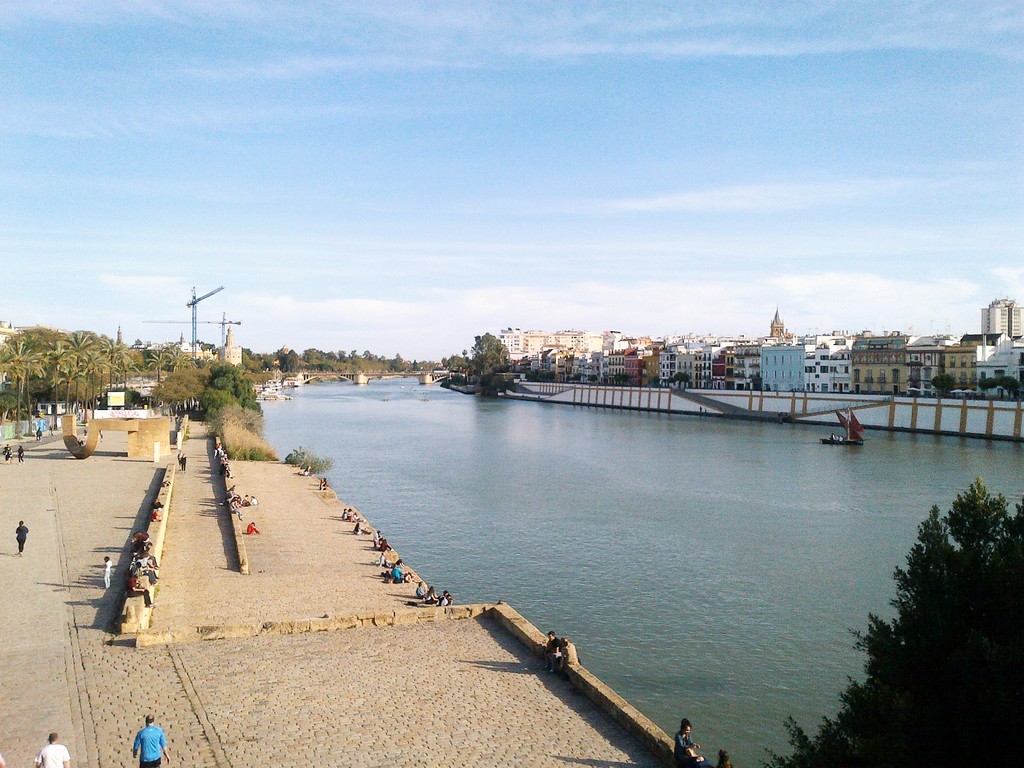
The official beginning of the tour was supposed to be 11:15, and although we were there at 11:14, we couldn’t find anyone. We were told to look for a guy with a black T-shirt saying Triana, who would be sitting in front of the City Hall, but there was clearly no one waiting for us. A little bit disappointed, but we tried to search him on the other side of the building as well, where workers were tearing down the decoration from Semana Santa and half of the City Hall was blocked. So we figured out quickly that he couldn’t have been on that side. Then we returned again to Plaza Nueva and after waiting another 5 minutes, giving a last hope to the whole thing, we spotted a group of people in the distance gathering around a guy who looked like someone that could have been a tourist guide. We hurried up to catch them, and when we got closer we could finally see the Triana label on his T-shirt, which was partially covered by a jacket and as such prevented us from noticing him earlier.
So while slowly getting back our motivation, the tourist guide, Medi introduced himself to our group with a perfect English and told us that in spite of the fact that the tour was advertised as free, we were welcome to give some tip at the end of the walk in order to help him keep up the high quality. He also told us that the tour was going to last about 2 hours and 15 minutes and that we would cover the historical old neighborhood of Sevilla called El Arenal, which is located on the east bank of the Guadalquivir.
Sevilla is the fourth biggest city in Spain and the capital of the autonomous community of Andalusia and the province of Sevilla, with a history of 3000 years. The original name of the city was Spal (unfortunately I don’t remember what the meaning of it was), which later during the Romans was modified to Hispalis, and after the Muslim conquest was called as Ishibiliya in Arabic. The latter is what turned out to be today’s Sevilla.
Walking among the walls of the El Arenal, we were told a number of historical details, which I won’t list here one by one, but Medi really tried to make it interesting. He always called us “Family” and talked to us with a very personal attitude – something that was appreciated by some and less appreciated by others.
One of our first stops was the Opera House of Sevilla, where Medi informed us that there are tons of operas written about the city. To give an example, Mozart’s Don Giovanni takes place in the 17th century Sevilla. He also mentioned that Mozart was having doubts whether to write the work in German or Italian, but at the end, he decided the latter as Italian was the language of operas in that era. The name Don Giovanni is actually the Italian version of the Spanish Don Juan. Other operas written about Sevilla include the Marriage of Figaro.
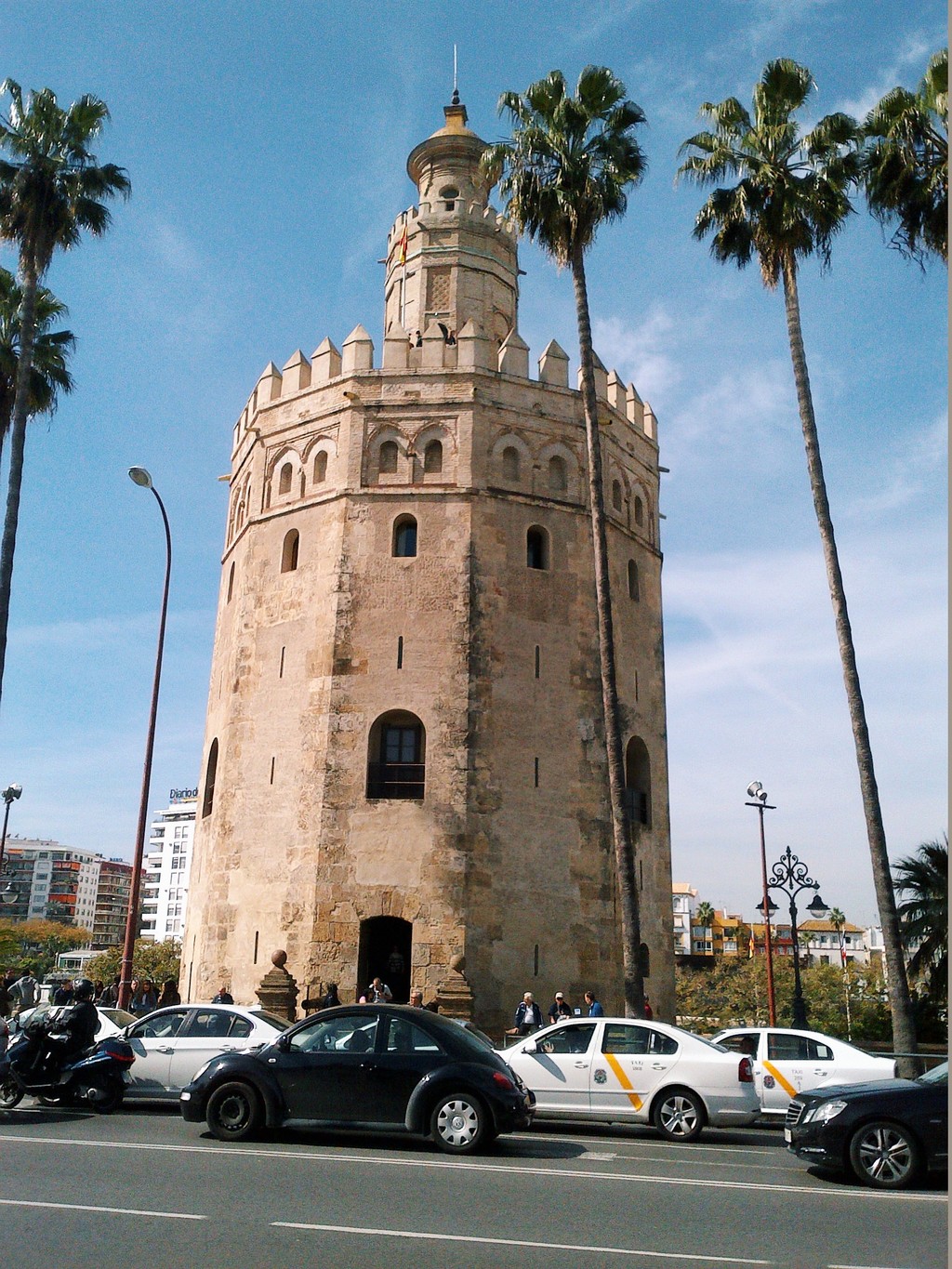
After the Opera House we headed to the Torre del Oro, which is one of the icons of the city and was constructed in the 13thcentury. When it comes to the fame surrounded by the tower, it’s not its architecture that is so out of the ordinary, but it is its historical importance that made it a symbol of the city. Many different sources say that the name of the tower (Tower of Gold) comes from the fact that in a strong sunshine the material of the building projected a golden colour, but according to Medi that was only good marketing. After the colonization had begun, Sevilla was the port for the ships coming from America, with all the gold and silver, and this is how the tower got its name. I tried to look it up on the internet, and I have found some sites saying the very opposite, so I am still not sure which one to believe.
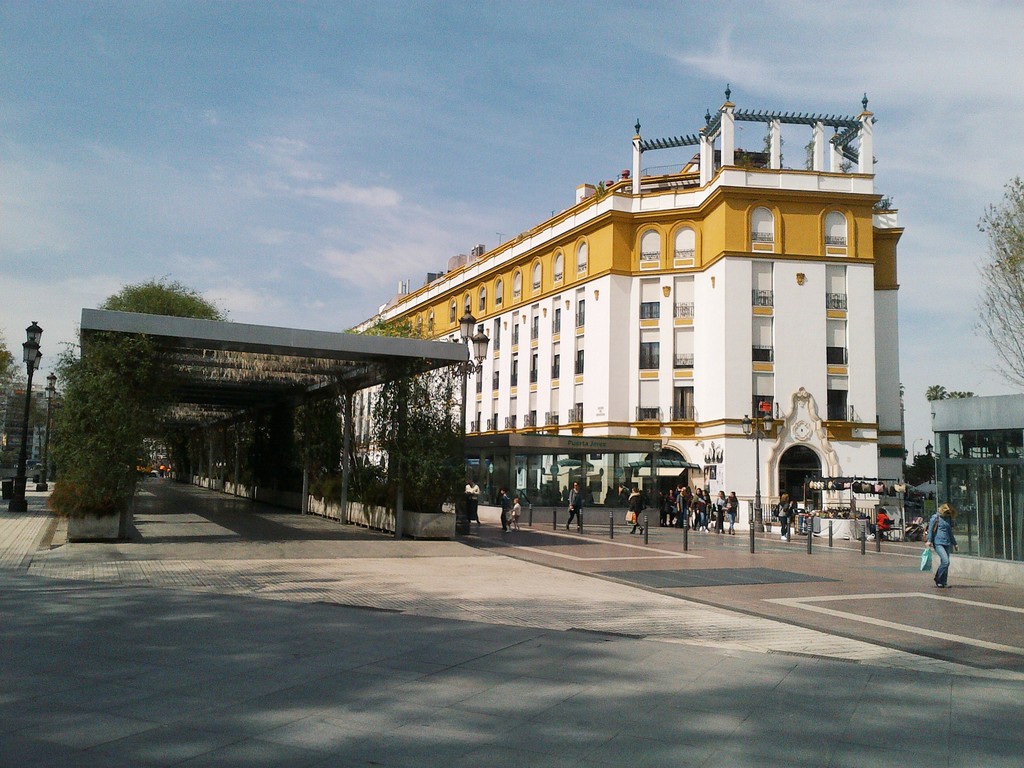
The next destination was the Puerta de Jerez, a metro station with a huge garden next to it, where Medi told us about the marriage arrangements in the Spanish royal family after the kingdom of Isabella of Castilla. Then we headed towards the Palacio de San Telmo, which is the seat of the presidency of the Andalusian government, but back then used to be a school for navigators. The palace can be visited on Thursdays, Fridays and Saturdays, but one needs to send an email previously.
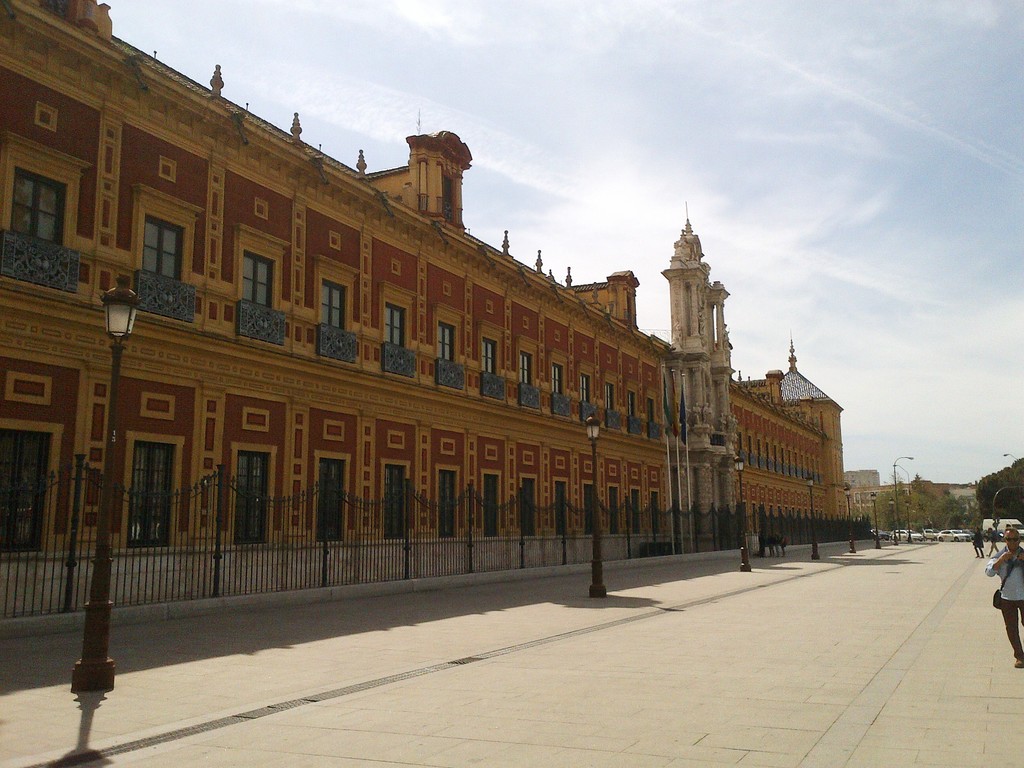
Walking by the palace, we ended up in front of the University of Sevilla. The building originally gave place to the Royal Tobacco Factory, which was among the first tobacco factories of Europe. At present, you can find here the rectorate of the university and some classes are given in the building, but most faculties can be found in other parts of the city.
Finally, our tour ended at the Plaza de España, which left me absolutely speechless: I have never seen anything like this before. Its architecture, which combined Renaissance and Moorish styles, is simply amazing, I could be spending all my afternoons there and I couldn’t get enough of the view. Not a surprise that the Plaza have already inspired a number of movie makers choosing this place as a key location to various movies. As for one, in the Star Wars: Episode II – Attack of the Clones, the square appears as the Naboo planet – however, the original Plaza was modified digitally. In reality, the Plaza has a half-circle shape, while in Star Wars it appears as a whole circle. The truth is that the architect, Anibál Gonzales originally pictured the place as a full circle as a well, but the designs had to be modified during the constructions for financial reasons, so he came up with the idea to make it a symbolic half-circle which is open to the former colonies of Spain. Definitely a smart idea and something that can be sold to the public. Anyhow, there is no question that the Plaza de España of Sevilla is the best existing Plaza de España in the whole world.

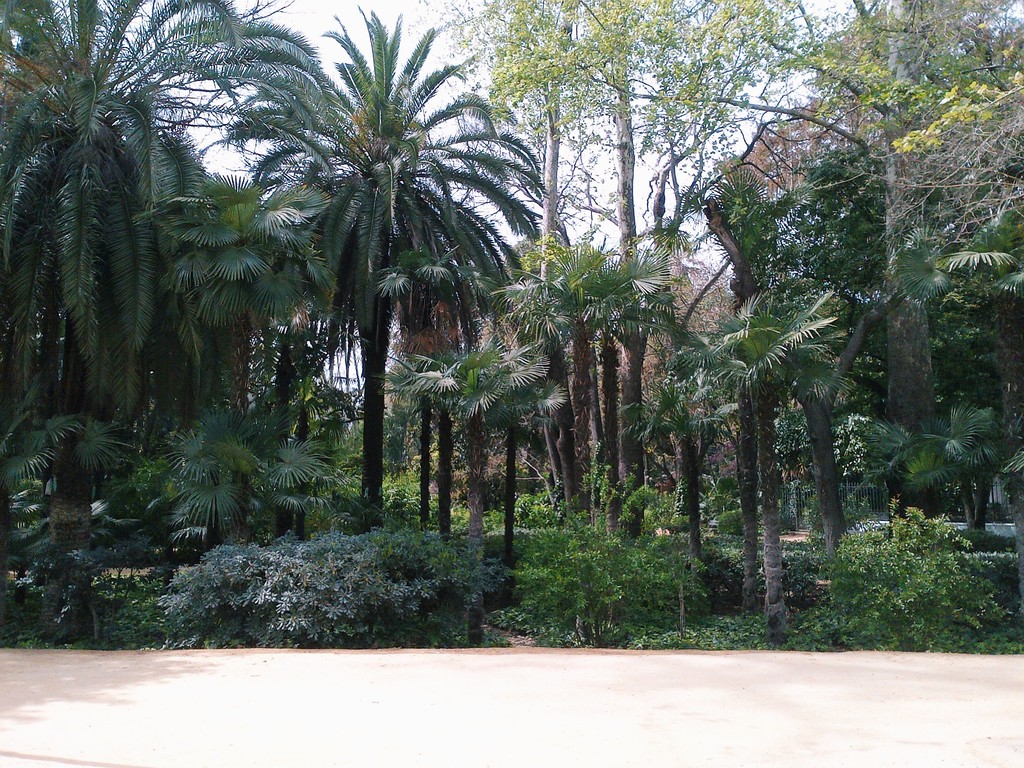
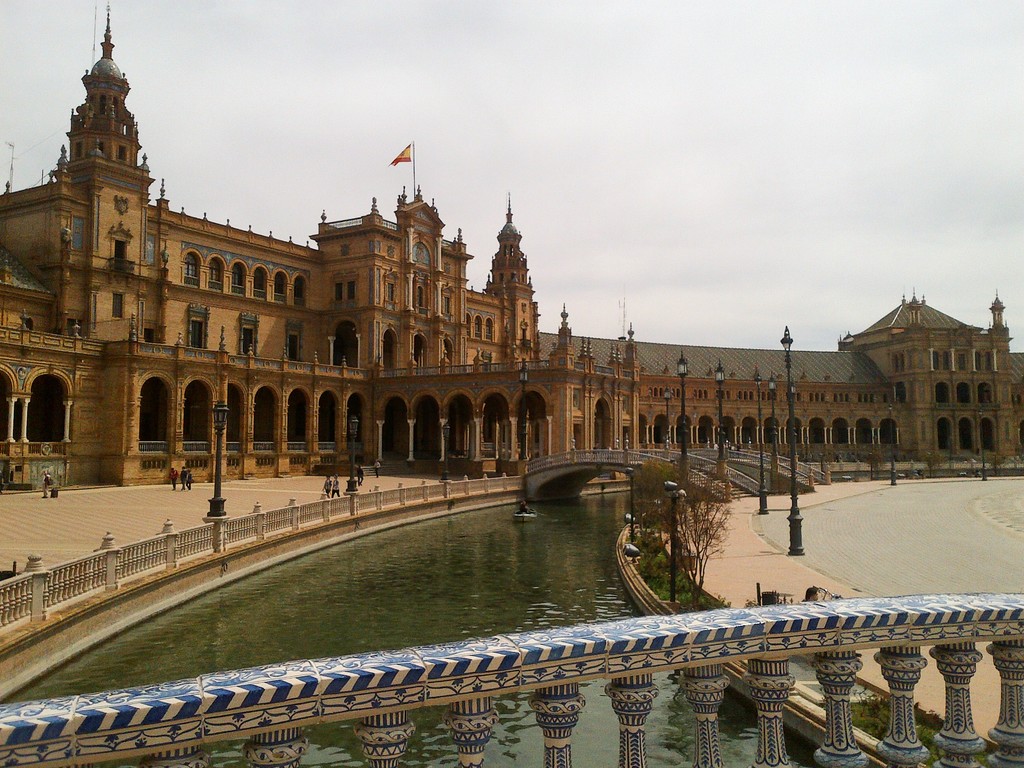
At this point, the tour came to its end and Medi thanked us for our constant attention. He also let us know that he would greatly appreciate some financial compensation for his efforts put into the tour. As everyone was digging in their pockets after banknotes, and we had an interesting, fun city tour after all, Kellen and I also decided to give him some money. (And also: who would just leave without giving him anything? ) However, this meant that in the end, our free walking tour resulted in extra financial expenditure. Of course, it was not a big number, but we wanted to save during the trip as much as we could, and paying for a tour was not included in our budget. In any case, the experience was worth it.
After taking a couple of pictures of the Plaza, we decided to look for a 100 Montaditos with our Argentinian company, who also had something to take care of in a district a little bit further away. Since at this moment we did not have any map, we just followed her. She was in a hurry as she wanted to enter the Alcázar for free (because on Mondays from 4-5 pm you can do that), so we were literally running across Sevilla to get there in time. We had a rapid lunch in Montaditos for quite a cheap price, because there was a good offer: for 2€ we got a sandwich with a jarra (that could have been beer or tinto de verano). Then we continued our marathon towards the Alcázar, where a huge queue was waiting for us. We got in after half an hour burning under the sun, and 5 minutes before the closing time, but at least we did it!
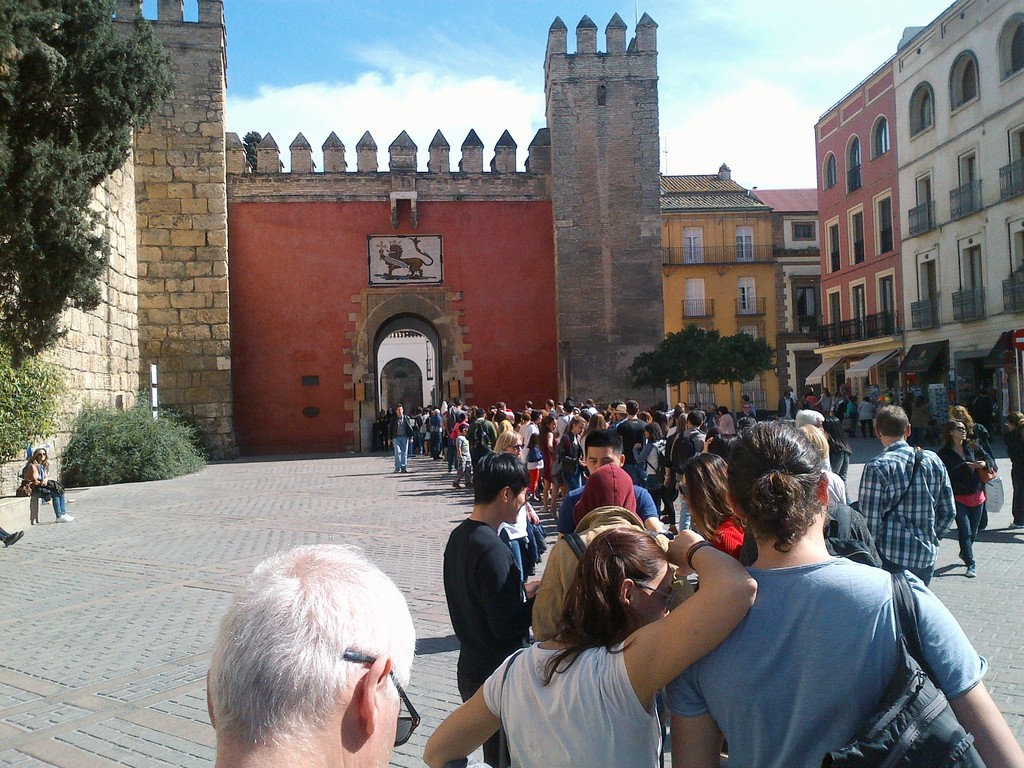
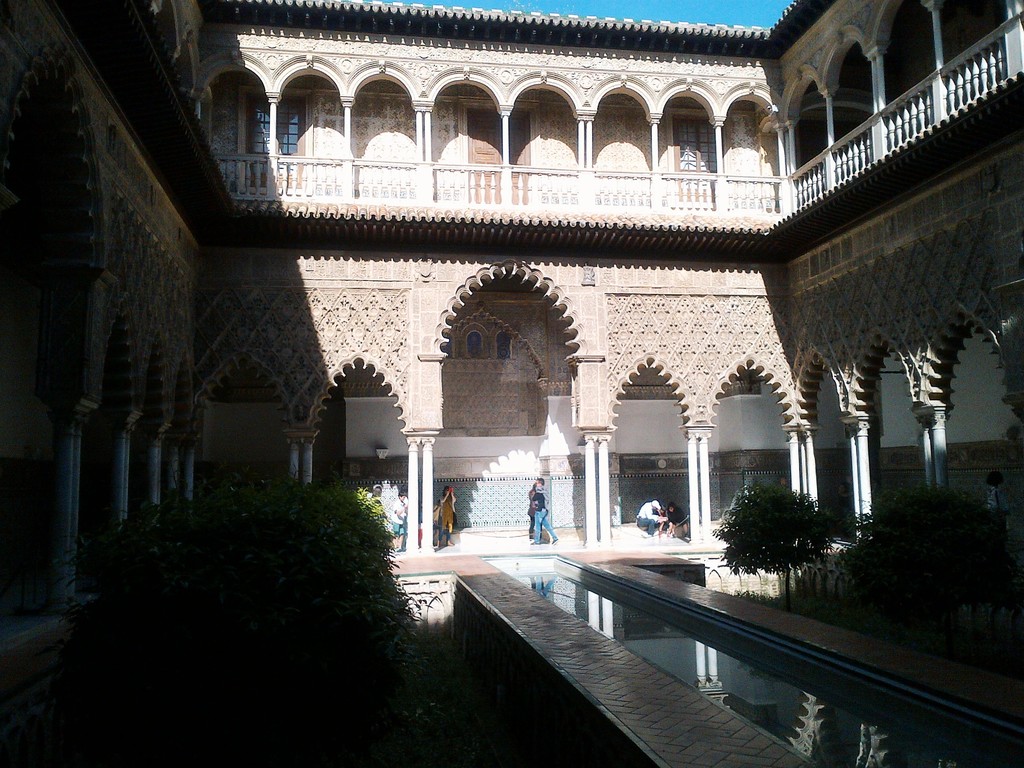

And this was when I realized that I did not even know what I was queuing for so long. The Alcázar of Sevilla is basically a royal palace with a beautiful garden. I heard that a part of it is still used by the royal family. It is a grandiose place that needs at least an hour to be explored properly, but we were sent out after 30 minutes. Never mind it, we still had a nice stroll inside while admiring the impressive architecture. Additionally info: we lost our Argentinian friend inside and we could not find her. Therefore, we continued our sightseeing without her and without map.
After leaving the Alcázar, the only thing we were dying for was cold and refreshing ice cream, so our next challenge was to find a place close. Meanwhile searching, we walked by the Cathedral, which again looked very beautiful, but we were so tired by then that we decided to leave it and return the next day. We were really happy when we finally found an affordable ice cream shop and we could sit down. Our feet were hurting so much! At that point, we had been on foot for 7 hours!
So basically this was the end of our first day sightseeing: after the ice cream, we walked back to the hostel. We really needed to relax a bit in our room, especially because we still had plans for the day. We wanted to visit a flamenco show, but unfortunately all the tickets had been sold for that night. Therefore, what we eventually did was to reserve two places for the next night, for 14€ each and then bought one liter sangría at the hostel for 3€, which we took up to the terrace. While resting our feet, we were enjoying the beautiful weather. It was a nice chillout.
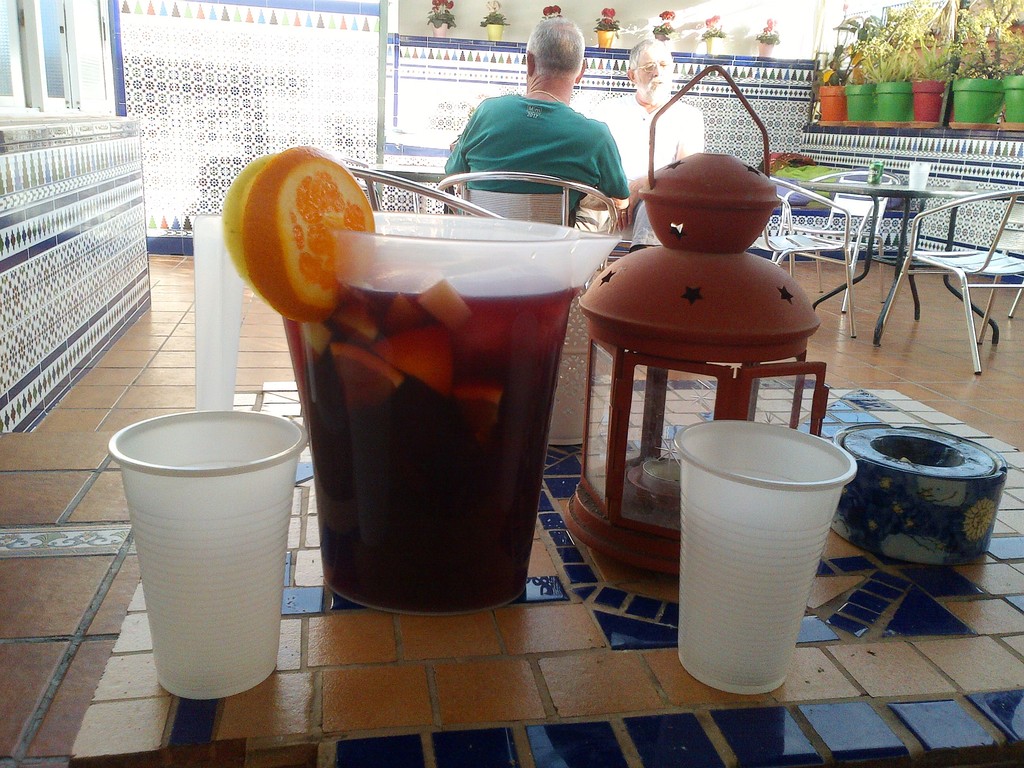
We returned to the market we discovered the previous day to have dinner. I have mentioned in the first post about Sevilla that the market was full of traditional Spanish dishes, so we always asked for a tapa to be able to try many different things. Our first choice was something called flauta with bacon and cheese inside. It cost us 3€, which we shared. Then, we went for a chicken and vegetables paella, as my Brazilian friend had never tasted it before. We were lucky, because despite asking for a tapa, we got a good amount of paella. It was 3. 50€. Afterwards, we were planning on having tortilla de patatas – again something that Kellen hadn’t tried before – but in the last minute we changed our mind and bought another flauta. Then came the dessert that we would never miss: we asked for a yoghurt cake that cost 3. 50€. In total, we spent 13€.


After our nice dinner, we were so tired that we literally fell into our beds. It was a very long day, we had saw many things, but we still had some touristic destinations listed in our notebook. Furthermore, since we were rushing during a good while in the afternoon, we also wanted to visit some of the places we saw again. And last but not least, the flamenco show still awaited us.
Photo gallery
Content available in other languages
- Español: Sevilla: visita turística
- Français: Tourisme à Séville
- Polski: Sewilla: zwiedzanie
- Italiano: Siviglia: cosa vedere
- Türkçe: Sevilla: Çevre Gezisi
Want to have your own Erasmus blog?
If you are experiencing living abroad, you're an avid traveller or want to promote the city where you live... create your own blog and share your adventures!
I want to create my Erasmus blog! →




























Comments (0 comments)